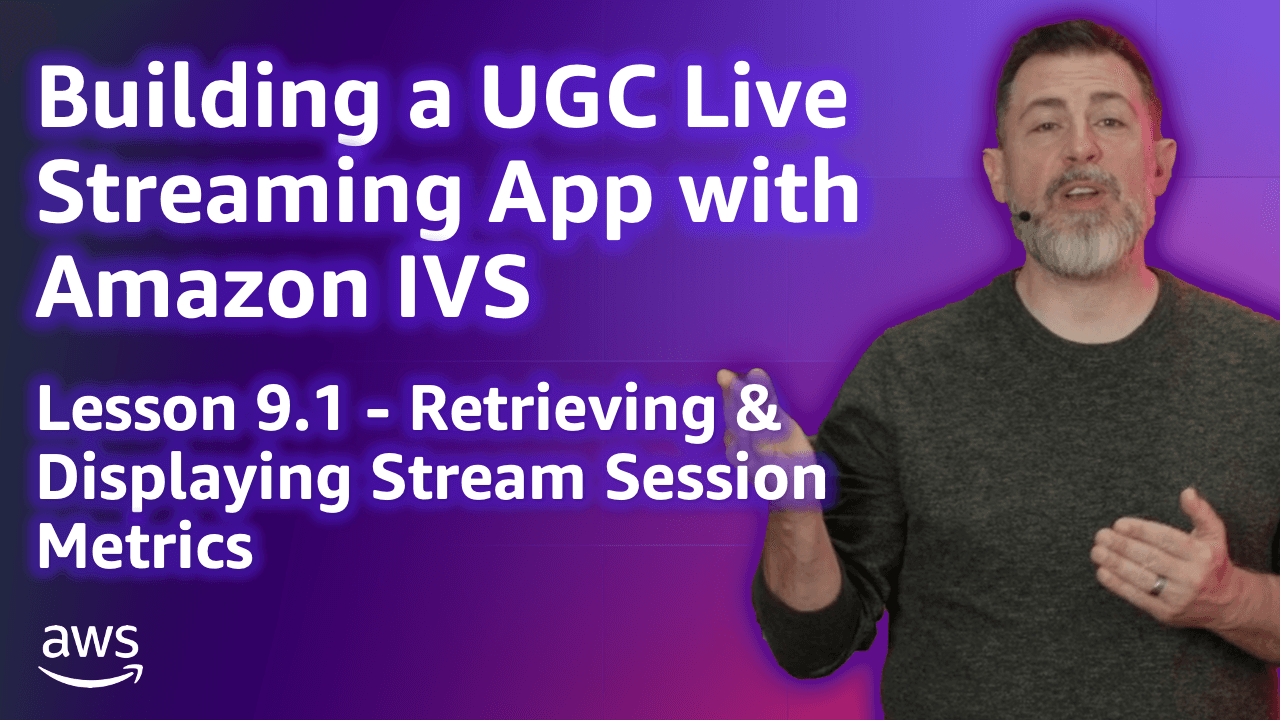
Build a UGC Live Streaming App with Amazon IVS: Displaying Stream Session Metrics (Lesson 9.1)
Welcome to Lesson 9.1 in this series where we're looking at building a web based user-generated content live streaming application with Amazon IVS. This entire series is available in video format on the AWS Developers YouTube channel and all of the code related to the sample application used in this series can be viewed on GitHub. Refer to the links at the end of the post for more information.
Todd Sharp
Amazon Employee
Published Jan 8, 2024
In this lesson, we'll look at how the StreamCat application retrieves and displays stream session playback metrics.
In lesson 7.1, we saw how StreamCat captures playback and session metrics during a live stream and persists that data to the database. Let's see how that data is queried and displayed to a user so they can gain insight into their streams and viewers.
StreamCat aggregates and provides insight into the following metric categories in the user's dashboard for all of their live streams:
- Viewers
- Chat Messages
- Viewer Browsers
- Viewer Operating System
- Playback Quality
- Playback Latency
- Playback Buffer
- Playback Bitrate
The following query is used to retrieve stream viewers over time. The data is aggregated at a 5 minute (300 seconds) interval.
This data is used to create a line chart in the user's dashboard for each stream.
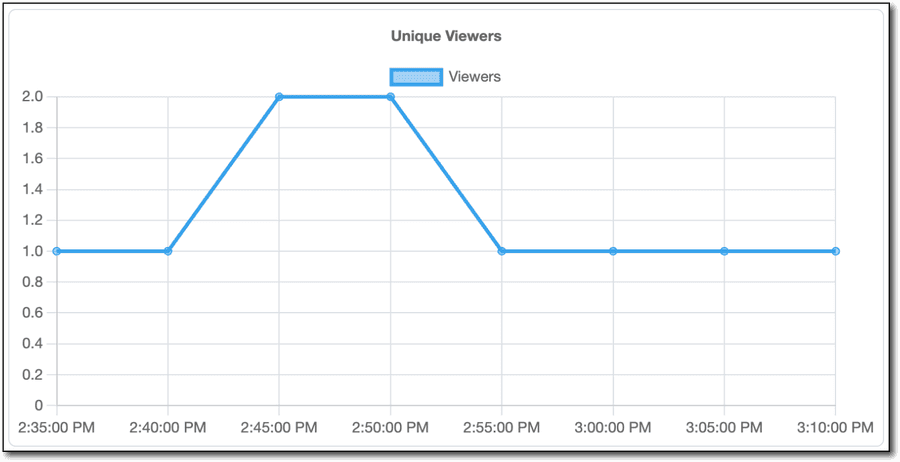
The following query is used to retrieve chat messages over time. The data is aggregated at a 5 minute (300 seconds) interval.
This data is presented in a bar chart.

The following query is used to retrieve viewer browsers.
The data is presented as a pie chart.

The following query is used to retrieve viewer operating systems.
This data is presented as a pie chart.
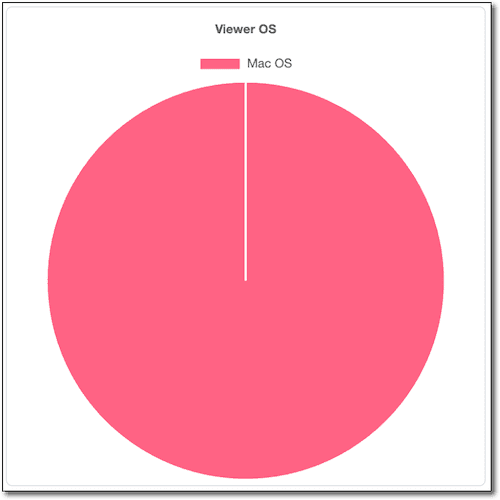
The following query is used to retrieve playback quality.
This data is presented as a pie chart.

The following query is used to retrieve playback latency. The data is aggregated at a 5 minute (300 seconds) interval.
This data is presented as a line chart.
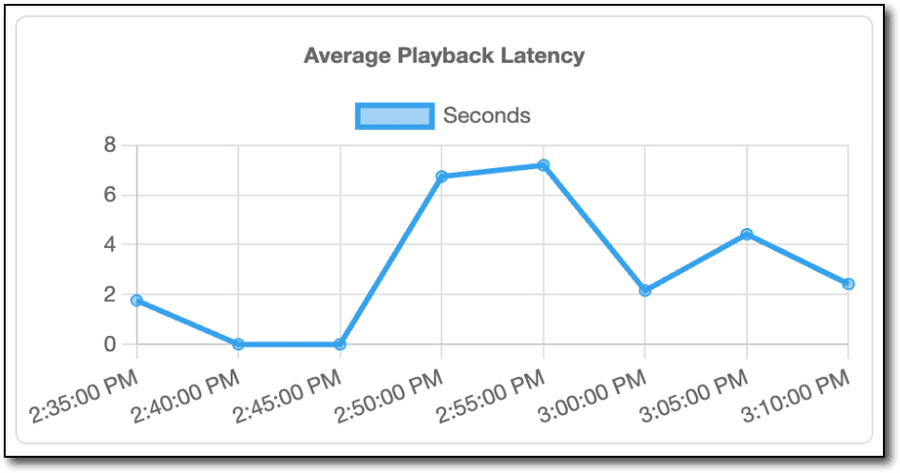
The following query is used to retrieve playback buffer. The data is aggregated at a 5 minute (300 seconds) interval.
This data is presented as a line chart.

The following query is used to retrieve playback bitrate. The data is aggregated at a 5 minute (300 seconds) interval.
This data is presented as a line chart.
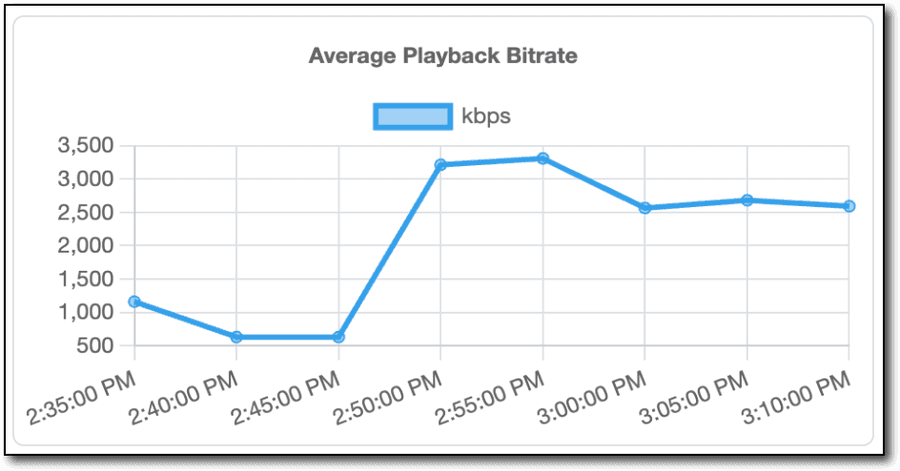
In this lesson, we learned how the StreamCat application queries playback and session metric data from the database. This data is presented to stream broadcasters so that they can gain insight into their stream viewers. Your application may choose to aggregate the data at a higher level to gain insight into your application viewers technology choices and the performance of your user's streams.
This lesson concludes this course. I sincerely hope that you have found the content in this course valuable and that you've learned something new about building live streaming application with Amazon Interactive Video Service. If you have any comments or questions about the content in this course, please feel free to reach out to Todd Sharp on Twitter (@recursivecodes) or LinkedIn. To learn more about Amazon IVS, check out https://ivs.rocks.
Any opinions in this post are those of the individual author and may not reflect the opinions of AWS.
